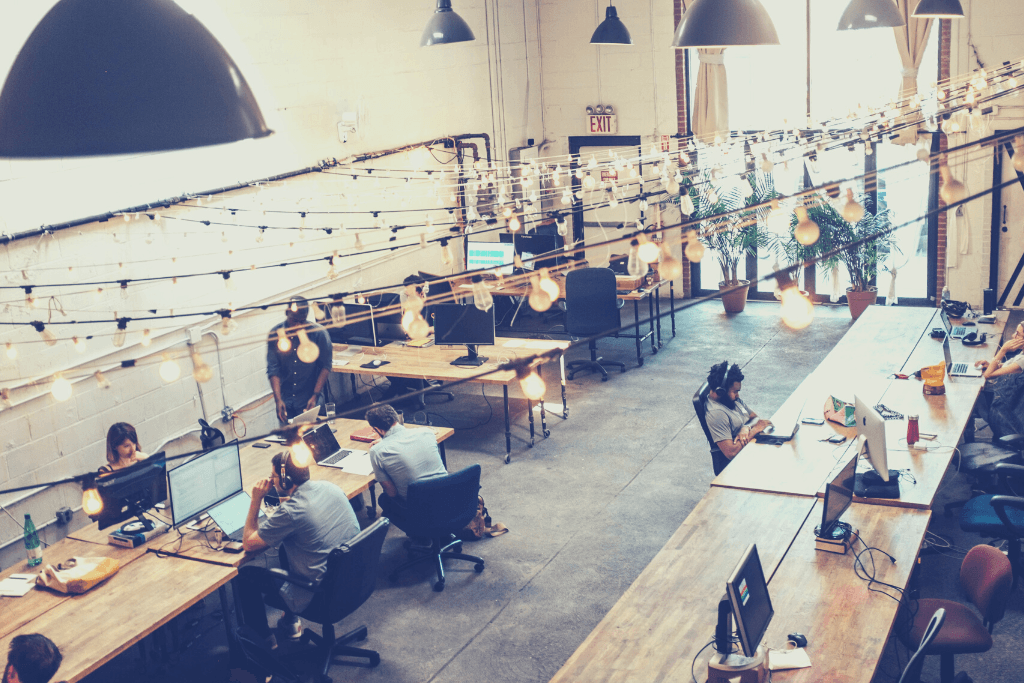The concept of an office originates in the 5th-century monasteries, where monks lived to copy, translate, and preserve religious texts. The workspaces in these monasteries were very simple writing rooms, known as “scriptorium” in Latin, which included a table.
Chairs weren’t even in the picture until Renaissance. The word “office” comes from a building called the “Uffizi“, which the Medici family built in the 15th century to keep all the administration and judiciary under one roof — and provided the workers with chairs and tables.
The Future of the Work is Hybrid

Fast forward to the 21st century, especially since the COVID-19 pandemic accelerated the adaptation to remote or hybrid work models, the definition of work has never been more fluid.
After the lockdowns, millions of office workers became fully remote, while some returned to their physical offices. A third and growing category of office workers can do both: A hybrid professional life allows them to balance remote and office locations.
There’s growing evidence that the future of work is hybrid. According to a global survey conducted by Accenture, an overwhelming 83 percent of workers would prefer to follow a hybrid model.
Seeing that hybridity and flexibility are already the norms for modern office life, it’s imperative for companies to alter their workspaces accordingly.
3 Recommendations for Updating the Post-Pandemic Office for Hybrid Work
- Prioritizing Employee Health & Wellness

Following the COVID-19 outbreak, public awareness about the importance of fresh air, physical distancing, hand hygiene, and mental health has skyrocketed. Most people’s expectations of an indoor environment, whether it’s their homes or offices, have changed irreversibly.
Reducing the number of desks is among the easiest ways to achieve many of these expectations. Fewer desks would increase physical distancing and open up more space for other well-being boosters, such as biophilic design elements and zones for collaboration.
- Socialization & Meeting Facilities

Despite the unstoppable rise of remote work, millions are still coming to the offices for a simple reason: Community and connection. Thus, the post-pandemic offices must free up space and resources to enable a dialogue among their employees that might not be possible in online meetings.
Furthermore, a rising number of office workers, particularly millennials and Gen Z, want more informal and warmer workspaces. In alignment with these demands, amenities like stylish lounges, communal eating zones, bars, libraries, and game rooms are becoming increasingly popular in hybrid-oriented offices.
- Flexible Access Solutions

The idea of a nine-to-five or a fixed workday no longer reflects the reality for millions of office workers. Thanks to the increasingly hybrid and flexible nature of work, many people have more control over their times and adopted irregular patterns in their schedules — which might bring more complex access needs.
Therefore, in the post-pandemic office catering to the needs of hybrid workers, access systems must be as flexible as the work itself. The right solutions can save time and resources while enhancing employees’ security, convenience, and comfort.
Evolving Necessities Will Shape the Future of Offices

There’s currently no way of knowing what the future of office spaces has in store for us. However, looking back at the origins of the office, it’s clear that necessity and societal progress will force our work environments to evolve to meet our changing needs. Undoubtedly, business visionaries who stay on top of these transformations are poised to carve out a stronger future for themselves and their employees.






